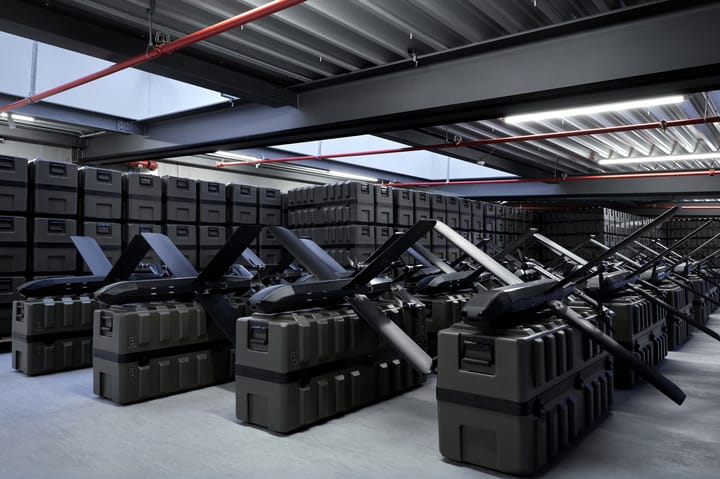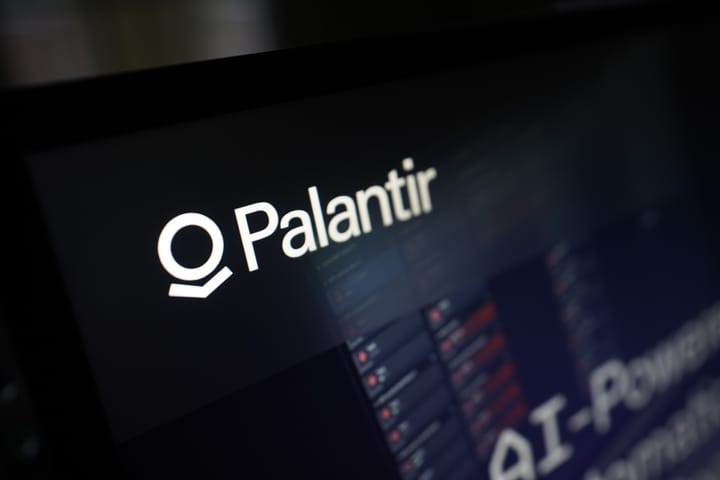EU Immigration 2025: Current Border Policy Updates

After years of debate, the European Union has finally agreed on a unified migration framework.
In 2024, Brussels adopted the New Pact on Migration and Asylum, a comprehensive reform package that not only modernizes border management and asylum procedures but also strengthens solidarity among member states, demonstrating the EU's holistic approach to migration reform.
The Pact introduces innovative measures such as faster screening, shared responsibility, and AI-driven border control, marking the EU’s most significant migration overhaul in a decade and showcasing its forward-thinking approach to migration management.
Overview of Key Measures
| Measure | Details | Status / Timeline |
|---|---|---|
| 1. Border Screening System | Mandatory identity, health, and security checks for all non-EU arrivals. Includes biometric registration and Eurodac cross-checks to prevent multiple asylum claims. | In force since 2024; full rollout by mid-2026 |
| 2. Asylum & Return Regulation | Streamlined asylum procedures — faster border decisions, clearer rules for returns. Distinguishes between those needing protection and those to be returned. | Gradual implementation (2024–2027) |
| 3. Crisis Regulation | Emergency rules for sudden influxes. Allows relocation across member states and temporary measures at borders. | Adopted April 2024 |
| 4. Shared Responsibility & Financial Solidarity | States must either host relocated asylum seekers or contribute financially (~€20,000 per applicant refused). | In effect 2024 |
| 5. Increased Support for Frontex | Expanding permanent corps from ~7,000 to 10,000 officers by 2027. Greater budget for joint operations and surveillance technology. | Budget +40% → €2.2B (2021–2027) |
| 6. Cooperation with Third Countries | Negotiations on asylum centers and registration zones in partner countries bordering the EU. | Ongoing (2024–2026) |
In practice, these measures aim to balance fairness with firmness — easing pressure on frontline states while maintaining humanitarian standards.
Modernization at the Border: AI, Drones, and Data
Europe’s external borders are entering a new phase — powered by artificial intelligence, unmanned systems, and biometric data.
The Pact places strong emphasis on integrating technology across all border points.
- AI-driven risk assessments accelerate identity and security checks, flagging irregularities in real time.
- The Eurodac reform introduces facial recognition and fingerprint storage for every applicant, closing loopholes in asylum duplication.
- Unmanned drones and satellite feeds strengthen 24/7 surveillance and improve coordination in complex terrains.
- Coast Guard evolution: Frontex and national agencies are integrating AI and unmanned systems into daily operations to enhance search and rescue capacity across the Mediterranean.
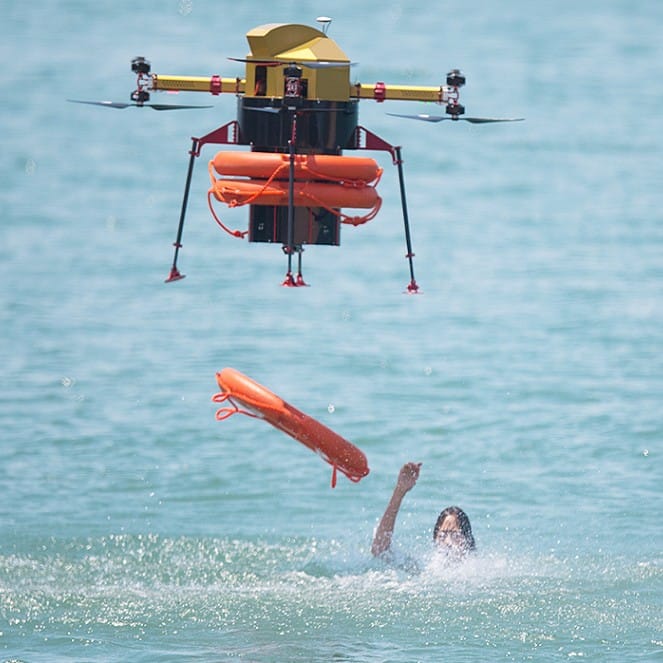
- Frontex and Bulgaria’s drone pilot project concluded successfully in 2025, paving the way for broader deployment of autonomous aerial surveillance across EU borders. The system demonstrated high accuracy in identifying irregular crossings and supporting ground patrols.
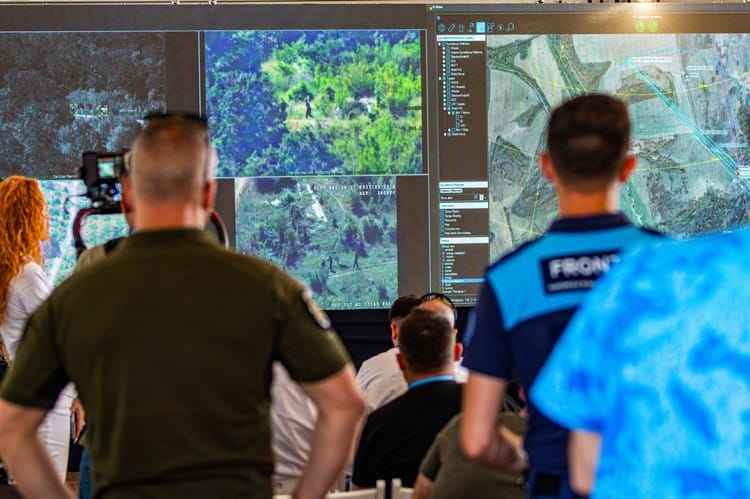
This modernization drive reflects the EU’s shift from reactive border control to predictive, intelligence-led management.
Implementation in Numbers (2025 Snapshot)
| Indicator | Data (2025) | Trend / Note |
|---|---|---|
| Irregular crossings (Jan–Aug) | Down 21% year-on-year | Linked to improved surveillance and faster screening |
| Main routes | Central Mediterranean (↓30%), Western Balkans (↓7%) | Stability returning on key corridors |
| Active Frontex operations | Greece, Italy, Bulgaria, Spain | Expanded tech deployment |
| Frontex workforce | 7,000 → 10,000 by 2027 | Recruitment ongoing |
| Budget | €2.2 billion (2021–2027) | Covering technology, training, and modernization |
The decline in irregular crossings signals early progress, though migration flows remain highly sensitive to geopolitical shifts and economic instability in neighboring regions.
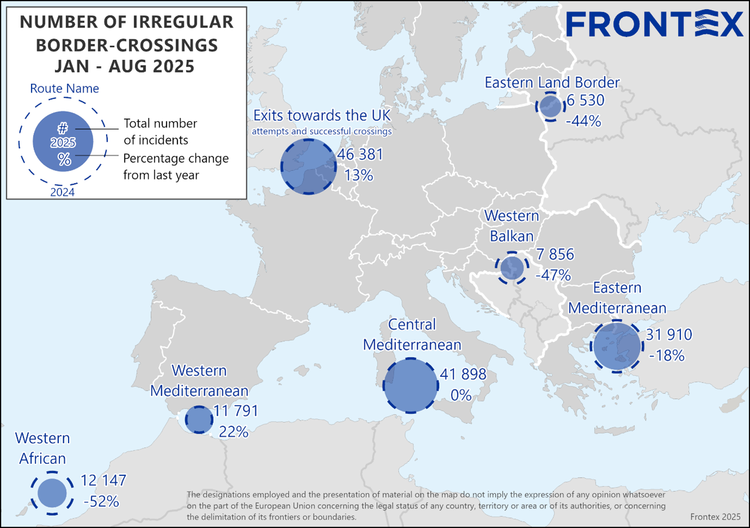
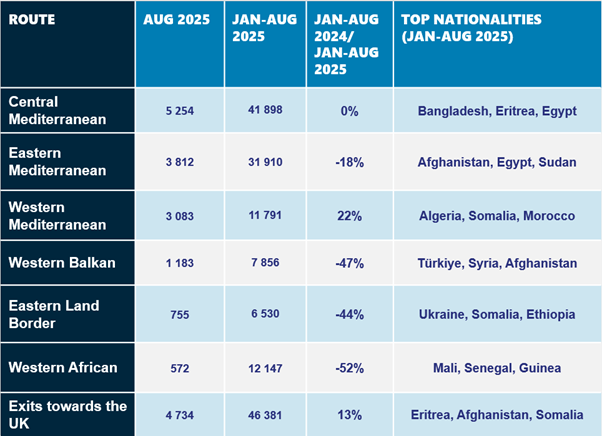
Critics and Challenges
Despite optimism in Brussels, rights groups caution that accelerated procedures could undermine due process and that border facilities risk overcrowding during peak influxes.
Supporters argue that more explicit rules, faster decisions, and shared financial responsibility are essential to prevent chaotic inflows and uneven burdens among member states.
Implementation will require close coordination between EU institutions and national authorities — particularly in countries at the external frontier such as Italy, Greece, and Bulgaria.
Conclusion
The EU Migration Pact represents a turning point in Europe’s border policy. By 2030, the goal is a system that combines security, solidarity, and human rights — supported by technology and shared responsibility.
Its success will depend on consistent national implementation, sustained funding, and strategic partnerships with neighboring regions.
Sources
- European Parliament, Migration & Asylum Pact (2024)
- European Commission, DG HOME – Press Materials (2024–2025)
- Frontex, Irregular Migration Trends 2025
- Council of the European Union, Press Release, 8 April 2024
- Frontex & Ministry of Interior (Bulgaria) – Drone Pilot Project Report, 2025
- European Maritime Safety Agency – Coast Guard Modernization Brief, 2025



